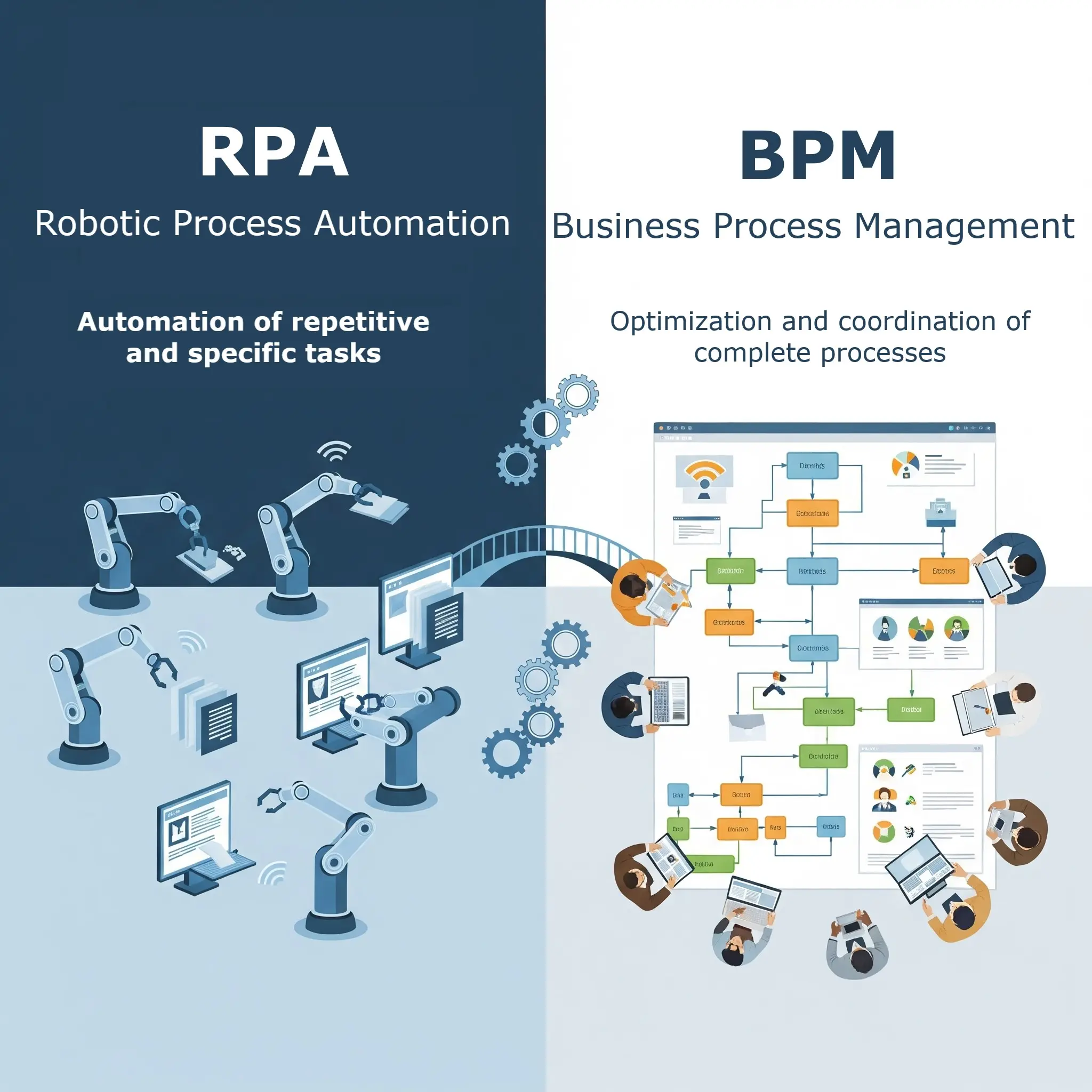Introduction
RPA vs BPM is one of the most common comparisons in the field of digital transformation. The key question is: are they rival technologies, or do they complement each other to optimize processes within organizations?
In this article, we will explore their differences, points of convergence, and how STELA integrates both perspectives to deliver frictionless automation solutions.
The debate: trend or dilemma?
Industry analysts agree that combining BPM (Business Process Management) with RPA (task automation) enables faster digitalization without sacrificing control and governance.
“RPA orchestrates task execution; BPM governs the end-to-end process. Together, both disciplines enable sustainable improvements.” — [data not publicly available]
This dilemma is not only technical but also strategic: many companies must decide whether to start with a process redesign (BPM) or automate critical points with robots (RPA) to achieve immediate speed.
Differences and similarities
Although both approaches seek operational efficiency, they are based on different foundations:
| Aspect | BPM | RPA |
|---|---|---|
| Focus | End-to-end process management and optimization | Automation of repetitive tasks and rules |
| Implementation | Planned and cross-functional initiatives | Fast iterations with deliverables in days |
| Flexibility | High, but often requires redesign | High, without changes to core systems |
| Users | Corporate processes and compliance | Business teams, operations, back office |
Use case: integration in practice
Let’s imagine an insurance company redesigning its customer service workflow. BPM defines the rules, steps, and responsibilities, while RPA (with STELA robots) executes tasks such as data entry, validations, and queries in legacy systems.
This hybrid model achieves speed without losing control and allows scaling digital transformation without duplicating efforts or interrupting business operations.
Benefits with STELA
STELA delivers unique value by enabling companies to combine the best of both worlds:
- No-code automation that accelerates delivery times.
- Unlimited user license to democratize automation.
- Coexistence with already defined BPM processes (governance and traceability).
- Support for web, mobile, and desktop applications.
Compared to traditional approaches, the benefits are clear:
| Criterion | Traditional RPA | STELA |
|---|---|---|
| Adoption curve | Steep | Smooth (no-code) |
| Deployment time | Months | Days or weeks |
| Scalability | Limited by licenses | Unlimited by users |
Related resources
- What is RPA? (Robotic Process Automation)
- 7 Common RPA Implementation Mistakes and How to Avoid Them
- Wikipedia: Robotic Process Automation (RPA)
- Wikipedia: Business Process Management (BPM)
- From RPA to BPM with AI (Cognizant)
Frequently Asked Questions (FAQs)
Does RPA replace BPM?
No. RPA automates tasks within processes defined by BPM. They complement each other.
Which is better to start digital transformation?
It depends. If the goal is speed, RPA is the natural entry point. For redesigning end-to-end processes, BPM is more suitable.
Does STELA integrate with BPM?
Yes. STELA can coexist with BPM solutions, providing execution robots without programming.
Which industries combine RPA and BPM?
Mainly banking, insurance, and the public sector, where regulated processes and operational agility are required.
Can I use STELA without BPM first?
Absolutely. Many organizations start with RPA and later evolve toward hybrid models.
Conclusion
The discussion RPA vs BPM should not focus on competition but on synergy. With STELA, companies can start with simple robots and scale toward real hyperautomation, without friction and with speed.
💡 Book a demo with STELA and discover how to integrate RPA and BPM in your organization.
Contact us and let us show you how simple it is to automate with STELA.
Interested in learning more or having a meeting? Fill out the form below and we will contact you.
